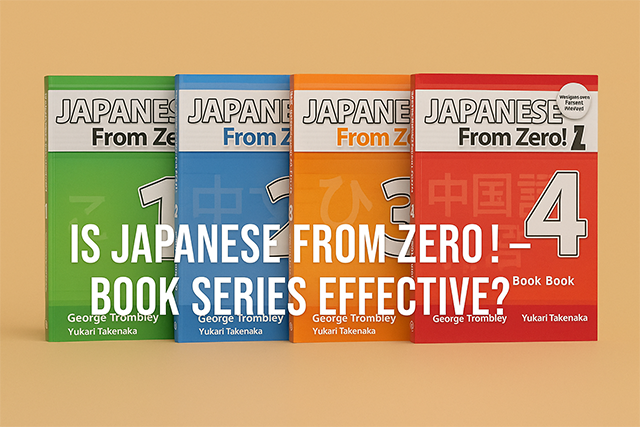Japanese From Zero! Book Series: An Honest Take From Someone Who’s Been There
I remember staring at my first Japanese textbook, completely overwhelmed by the strange symbols and unfamiliar sounds. That’s when a friend recommended the Japanese From Zero! series, and honestly? It changed my language learning journey.
What Makes This Series Different?
There’s something refreshingly unpretentious about George Trombley and Yukari Takenaka’s approach. Unlike those intimidating academic textbooks that seem written for linguistics professors, Japanese From Zero! actually feels like it was made for normal people.
George (who’s a professional interpreter) and Yukari designed these books assuming you know absolutely nothing about Japanese. And as someone who literally couldn’t tell hiragana from katakana when I started, I appreciated that!
The Good Stuff
The explanations clicked for me immediately. Instead of drowning in technical linguistic terms, the grammar is explained in plain English. I found myself nodding along rather than scratching my head.
What I particularly loved was how each concept builds naturally on the last. You’re never thrown into the deep end. Each book moves forward at a pace that challenges you without overwhelming you.
The way they integrate hiragana and katakana learning is brilliant too. Rather than making you memorize all the characters upfront (boring!), you learn them gradually while picking up useful vocabulary and phrases.
And can we talk about George’s YouTube lessons? Finding those videos felt like striking gold. There’s something about watching someone explain concepts with enthusiasm that makes everything stick better than just reading a page. His teaching style is engaging and often funny – I’ve literally laughed out loud during Japanese lessons!
The Not-So-Perfect Parts
I should mention that if you’re obsessed with learning kanji right away, the early books might frustrate you. They focus on building conversational skills first, which was perfect for me since I wanted to actually speak, but might not suit everyone.
Some sections do get repetitive. By book three, I sometimes found myself thinking, “Yes, I get it, let’s move on!” But then again, that repetition is probably why I remember certain grammar points so well.
And let’s be realistic – this series won’t take you all the way to fluency. It maxes out around the JLPT N4 level, so intermediate territory. If you’re dreaming of passing the higher-level tests, you’ll eventually need to graduate to other materials.
How It’s All Organized
The five books follow a logical progression:
Book 1 gets you comfortable with hiragana and basic sentences. I still remember the satisfaction of writing my first complete Japanese sentence!
Book 2 introduces katakana and expands your grammar toolkit with particles and counting (which, trust me, is trickier in Japanese than you’d expect).
Books 3 and 4 ramp things up with more complex grammar patterns and sentence structures. By this point, you’re having actual conversations, not just memorizing phrases.
Book 5 rounds everything out, preparing you for that intermediate threshold where Japanese starts feeling less like a school subject and more like a real language you can use.
Who Should Pick These Up?
If you’re starting from scratch and teaching yourself, these books are a godsend. They hold your hand just enough without making you feel like a child.
They’re perfect if you:
- Get overwhelmed easily by too much information at once
- Learn better when concepts are explained clearly in English first
- Appreciate having video explanations to supplement your reading
- Want to build a solid foundation before tackling advanced material
My Verdict
Is it worth it? For beginners, absolutely. When I started, I couldn’t read a single Japanese character. After working through these books (and actually sticking with them), I could have basic conversations, read simple texts, and navigate my way around Tokyo without constantly pulling out Google Translate.
The series delivers exactly what it promises – taking you from zero to functional Japanese. No, it won’t make you fluent enough to work as a translator, but it gives you an incredibly solid foundation that makes continuing your studies much easier.
If you’re on the fence, just check out some of George’s YouTube videos first. His teaching style in the videos mirrors the books perfectly, so if you like his approach, you’ll enjoy the series.
Starting a language from scratch is hard enough – having learning materials that don’t make you want to quit is worth its weight in gold!

